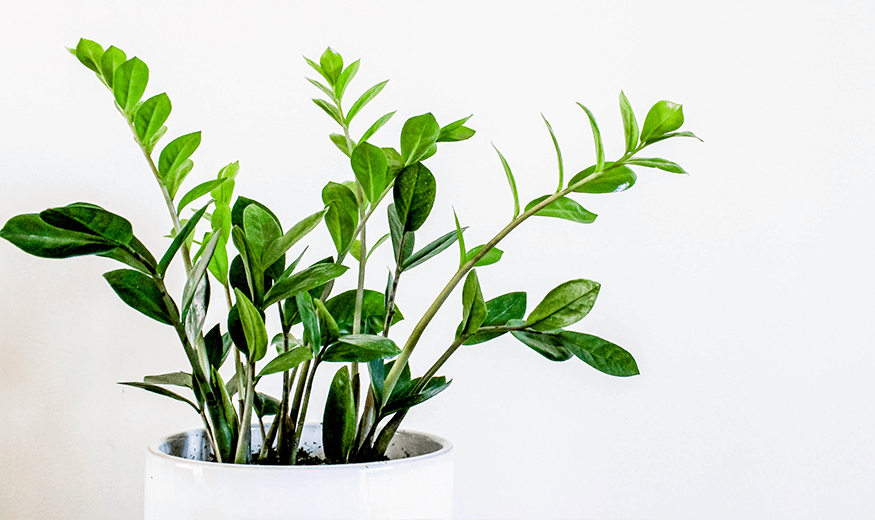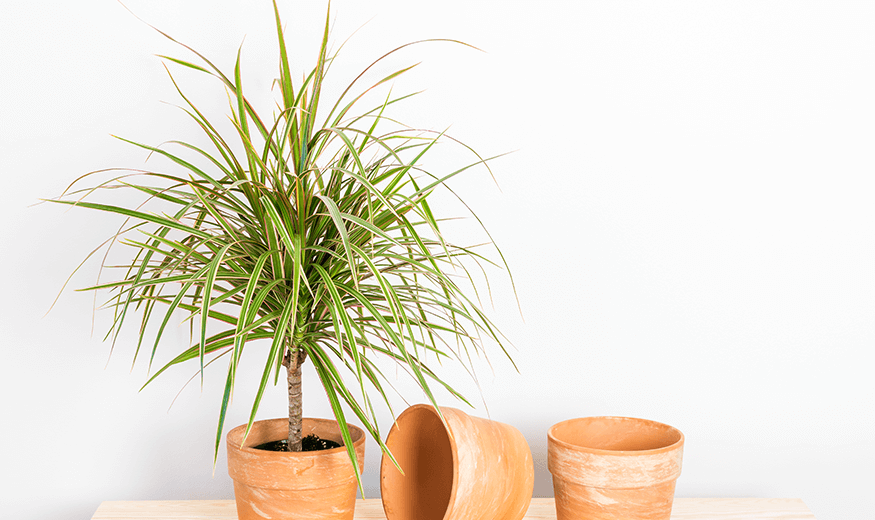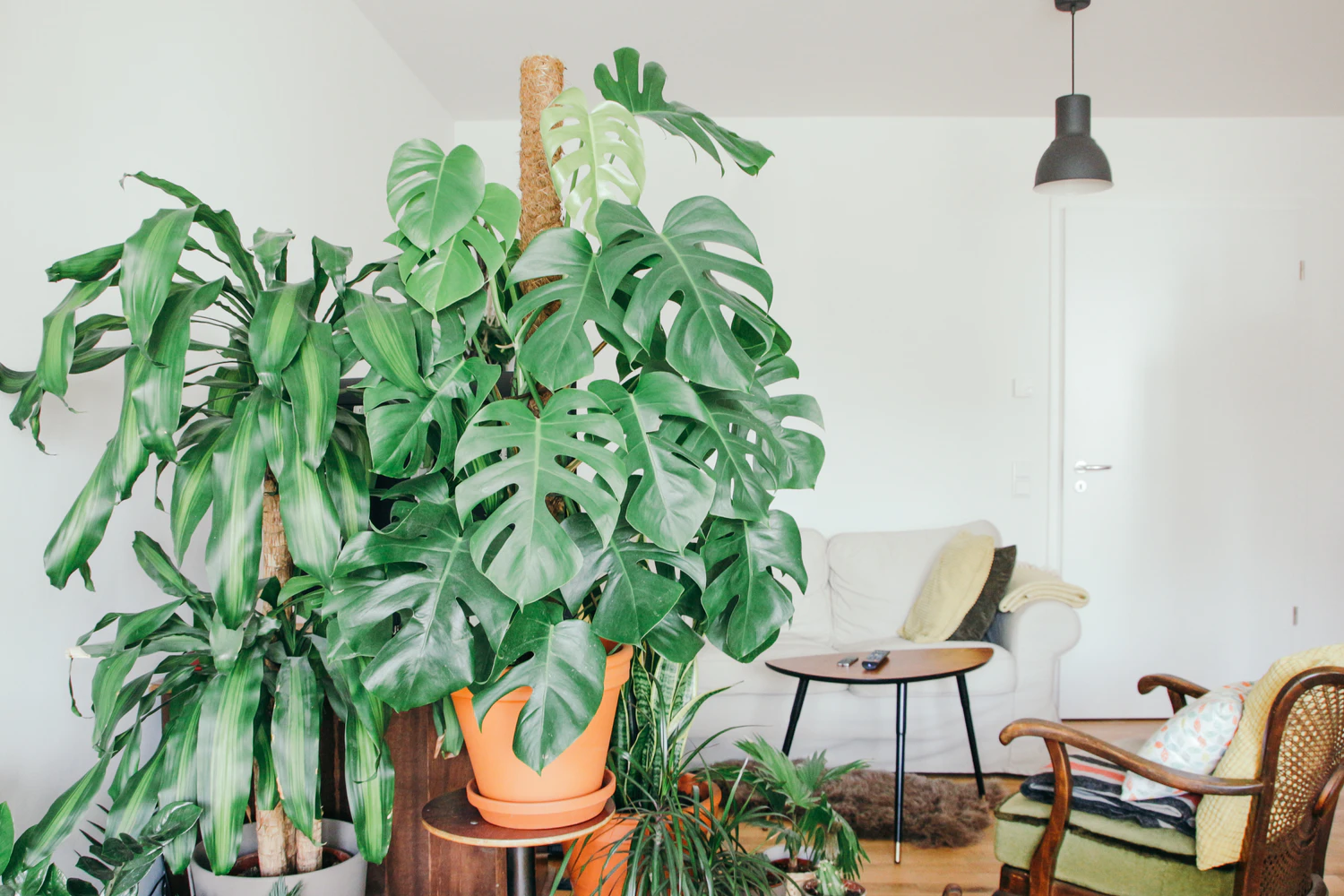So, you’ve been trapped in your studio apartment alone for almost a year now? We feel you. Are you thinking about bringing some plants into your home office? Studies show that adding some greenery to your work environment will not only make your space look awesome, but can also improve air quality, your overall mood and increase productivity. However, there are a number of different environmental factors you should consider before bringing plants into your space such as lighting, humidity, temperature levels, and capacity to care for the plant. There are a number of great plants that you can bring into your space that are easy to care for, and can ultimately improve your outlook and healthy approach to your day.
1. Spider Plant
Don’t worry, this plant isn’t a furry beast with eight legs. The spider plant has many health benefits, specifically that of air quality control. The spider plant is effective in reducing the indoor carbon monoxide level, which helps in decreasing fatigue, headaches, colds, sore throats, and flu-like symptoms caused by CO exposure. Similar to a spider bug, the spider plant is small and can fit nicely on your desk. They are also non- toxic for pets (unlike a black widow). Fitting for their name, spider plants have a reputation for being impossible to kill, and while they don’t need much attention, they are not invincible. They can miss a few waterings here and there, but make sure to mist regularly to ensure they thrive.

2. ZZ Plant
The ZZ Plant (AKA Zamioculus zamifolia) is a succulent with two characteristics that make them one of the most popular office (even overall house) plants. The ZZ plant removes Toluene and Xylene from indoor air. What does this do? This process is known to reduce stress levels. One of the best parts about the ZZ plant is that they can tolerate a low light environment and have the ability to grow with very little watering. Misting can help also keep your ZZ plant hydrated. They can live in almost any environment, but their little leaves can collect dust, so you’ll have to dust them off every now and then. However, if you have a pet, keep them away from this plant. All parts of the plants are toxic to pets and humans (though we hope you don’t consume any of your lovely indoor succulent friends).
3. Snake Plant
Again, with the horrifying animal names! We promise that no reptiles will be involved in moving this plant into your office. The snake plant is a staple in most homes. They come in a variety of sizes, shapes, and colors and look great on your desk. However, we’ll likely be moving it to the floor, due to it’s potential to grow up to 5 feet. Snake plants are great for fighting allergies and are on the list of plants recommended by NASA. NASA! They’re pretty adaptable plants and don’t require too much watering. However, like some real snakes, snake plants can be poisonous to humans and pets.
4. Philodendron..There’s many!
This plant looks as fancy as the name sounds. Philodendron have been a houseplant staple since the early 1800s and come in a ton of varieties. Some popular varieties include the Monstera (aka Swiss Cheese Plant), the Heartleaf philodendron, and the trailing plant. They grow super-fast and are very forgiving, as they can withstand a number of poor environmental factors, like low light and inconsistent waterings. They prefer low humidity and but will thrive in a slightly more humid environment. As a tropical plant, philodendron is particularly effective at helping the clean the air we breathe. To take advantage of its air purification qualities for a healthier home environment, place philodendron plants in every 100 square feet of living space and let it do what it does naturally. However, keep them out of reach of your pets, cause this plant too is toxic when consumed.
5. Dracaena
Not to be mistaken with Dracula, dracaena’s a bit more colorful than our brooding vampire friend. They help remove formaldehyde, benzene, trichloroethylene, and carbon dioxide from your environment. This can help you avoid headaches and respiratory problems. This is what makes dracaena plants are among the most effective for removing pollutants from the air. Similar to our tall Transylvanian blood- sucker, some varieties of dracaena can grow up to 8 feet tall! However, young plants can be purchased small and are suitable for mantels, tabletops, and desks.
6. Pothos
Pothos are as chill and easy- going as they look. Pothos plants are known for their ease of care and their ability to propagate and make more plants! They come in a wide range of varieties and colors. They are happy placed in a bright, well-lit area; however, they can tolerate lower light. They are living air purifiers, removing common household toxins from the air, making it a healthy and beautiful addition for your space. They can also help alleviate eye irritation after long days of staring at screens and typing on keyboards. Pothos are great at alerting you when they need or don’t need water. If your plant has yellow leaves, this may indicate overwatering, while brown leaves mean the plant needs more water. Though only mildly poisonous to humans and animals, we recommend keeping them out of reach. Plus, they look so cute hanging off a table or shelf.
Plants for a Healthier Life
We hope you start bringing some of these incredible plants into your home to help decorate the space and add some much-needed health benefits to your day.






